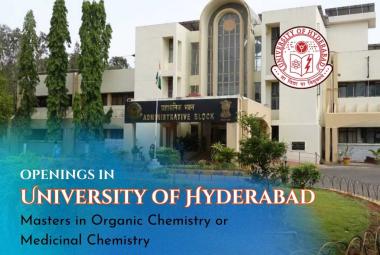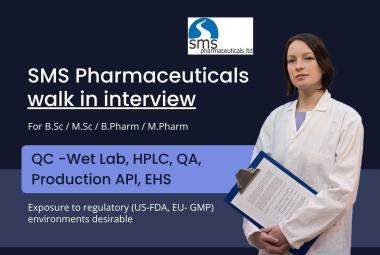{ DOWNLOAD AS PDF }
ABOUT AUTHORS:
*1Baokar Shrikrishna, 1Annadate Amol, 2Undare Santosh
1Department of Pharmaceutical Chemistry, SVPM’s College of Pharmacy, Malegaon (Bk II), Tal-Baramati, Dist- Pune, Maharashtra, India
2P.G. Department of chemistry, Balbhim arts, science and commerce college, Beed
krishnabaokar@gmail.com
ABSTRACT
A Simple, sensitive, specific, spectrophotometric method has been developed for the detection of Lumefantrine in pure and Pharmaceutical formulations. The optimum condition for the analysis of the drug was established. Lumefantrine shows maximum absorption at 228 nm and obeyed beers law in the concentration range 10 to 50 µg/ml.
The correlation coefficient was found to be 0.999 and slope of line was found to be 0.0635. The percent S.D. for intra assay precision of the method was found to be 1.85% whereas Inter assay precision was found to be 0.44%. The sample solution was stable up to 24 hours. The assay results were found to be in good agreement with label claim.
The proposed method was simple sensitive, precise, quick and useful for routine quality control.
INTRODUCTION
Lumefantrine is an anti malarial drug widely used in malaria endemic areas1. Many studies have demonstrated that it is highly effective in the treatment of resistant P. falciparum malaria, resulting in high cure rates and prevention against re infection. Lumefantrine also named benflumetol and chemically (9z)-2, 7-dichloro-9-((4-chlorophenyl) methylene)-a-((dibutylamino) methyl)-9H-fluorene-4-methanol with a molecular formula C30H32Cl3NO is an aryl alcohol
Anti malarial first synthesized in the 1970’s by the Academy of Military Medical Sciences, Beijing, China and registered in China for the treatment of malaria in 19872.The compound is a yellow powder that is poorly soluble in water, oils, and most organic solvents, but soluble in unsaturated fatty acids and acidified organic solvents. Lumefantrine is extensively bound (≈99%) to plasma proteins, mainly high density lipoproteins3. The molecular structure has been presented in fig 1. Lumefantrine as a drug is commercially available only in a fixed-dose combination with artemether4. Lumefantrine is having following side effects such as cough, diarrhea, dizziness, fatigue, headache, loss of appetite, nausea, vomiting and weakness. The exact mechanism of Lumefantrine is not well defined. Literature review reveals that the various analytical methods like HPLC-UV method (210 nm) for the simultaneous quantitation of artemether and lumefantrine in fixed doe’s combination tablets5. Liquid chromatographic method for determination of lumefantrine in capillary blood on sampling paper6 solid-phase extraction and liquid chromatographic method7 in rat plasma by liquid-liquid extraction using LC-MS/MS with electro spray ionization8,9,10,. The aim of the present work is to find out a simple, specific, sensitive, spectrophotometer method developed for the detection of Lumefantrine in pure form and in pharmaceutical formulation.
EXPERIMENTATION
Instrumentation
A double beam spectrophotometer Shimadzu UV-VIS 1700 Pharmaspec LP was used for the detection of absorbance, Afcoset FX-300 as Weighing balance and Ultra pure sonicator, borosil glass apparatus were used for experimental purpose.
Chemicals and Reagents
Lumefantrine working standard was supplied by Sequent Research Limited, Mangalore, (Karnataka-India) as a gift sample. Marketed sample for the analysis which brought from local pharmacies. Lumefantrine (100mg/tablet) was manufactured by the Shreya Pharmaceutical Pvt. Ltd. India. All other chemicals used in the analysis were AR grade.
Standard Solution
Accurately 100 mg Lumefanrine was weighed and it was diluted with 100 ml methanol. From the resulting solution 1ml was taken and made up to 100 ml to give 10ppm concentration of Lumefantrine and its absorbance was recorded.
Sample Solution
20 tablets were weighed and powdered. From this, powder equivalent to 0.379gm of Lumefanrine was taken and it was extracted with methanol and then the resulting solution is made up to 200 ml with Methanol. From the resulting solution 10 ml was taken and made up to 100 ml. then pipette out 10 ml from above solution dilute up to 100 ml with methanol, then absorbance of resulting solution was recorded
METHOD VALIDATION
Validation of the analytical method for the determination of Lumefantrine in Pure form and in pharmaceutical formulation was carried out as per ICH guidelines. All the validation parameters for Lumefantrine shown in Table No. 1
TABLE NO. 1 VALIDATION PARAMETERS FOR LUMEFANTRINE
|
Parameters |
Lumefantrine |
|
Measured Wavelength |
228 nm |
|
Linearity Range |
10-50 ppm |
|
Slope |
0.0535 |
|
Intercept |
-0.0032 |
|
Method Precision % RSD |
0.1175 |
|
Correlation Coefficient |
0.999 |
LINEARITY
The method was validated according to ICH Q2B guidelines for validation of analytical procedures in order to determine the linearity, sensitivity, precision and of the analyte11, 12, 13, 14 For Lumefantrine, five point calibration curves were generated with the appropriate volumes of the working standard solutions for UV methods. All the linearity data tabulated in Table No. 2 and linearity curve shown in Fig. No. 2
TABLE NO. 2 LINEARITY
|
Sr. No. |
Concentration (ppm) |
Absorbance |
|
1 |
10 |
0.525 |
|
2 |
20 |
1.052 |
|
3 |
30 |
1.611 |
|
4 |
40 |
2.19 |
|
5 |
50 |
2.631 |
|
|
Mean |
1.6018 |
|
SD |
0.846625 |
|
|
RSD |
0.5291 |
|
|
%RSD |
52.91 |
|
|
Correlation coeff. |
0.99915 |
|
|
Slope |
0.0535 |
|
|
Intercept |
-0.0032 |
ACCURACY
The accuracy of an analytical method is the closeness of the test results obtained by that method to the true value15. The accuracy of an analytical method is defined as the degree to which the determined value of analyte in a sample corresponds to the true value, which is tabulated in Table No. 3
TABLE NO. 3 ACCURACY
|
Sr. No. |
Concentration |
Absorbance |
Result |
|
1 |
80 % |
0.990 |
Mean = 0.972 S. D. =0.020 % R.S.D. = 2.088 |
|
0.950 |
|||
|
0.976 |
|||
|
2 |
100 % |
1.181 |
Mean = 1.172 S. D. = 0.013 % R.S.D. = 0.136 |
|
1.157 |
|||
|
1.179 |
|||
|
3 |
120 % |
1.352 |
Mean = 1.358 S. D. = 0.017 % R.S.D. = 1.280 |
|
1.378 |
|||
|
1.345 |
PRECISION
The precision of an analytical procedure expresses the closeness of agreement (degree of scatter) between a series of measurements obtained from multiple sampling of the same homogeneous sample under the prescribed conditions16.
System Precision
The precision were determined with standard quality control samples (in addition to calibration standards) prepared in triplicate at different concentration levels Performing replicate analyses of the standard solutions was used to assess the precision and reproducibility of the proposed methods. The selected concentration within the calibration range was prepared in methanol and analyzed with the relevant calibration curves to determine the intra and inter day variability. The System and Method Precision were determined as the RSD %.
Method Precision
Method precision or intra-assay precision data are obtained by repeatedly analyzing, in one laboratory on one day, aliquots of homogeneous sample, each of which independently prepared according to method procedure.
All the data for System and Method Precision tabulated in Table No. 4 and 5 respectively.
TABLE NO. 4 SYSTEM PRECISION
|
Sr. No |
Conc. (ppm) |
Abs-1 |
Abs-II |
Abs-III |
Avg |
|
1 |
20 |
1.052 |
1.071 |
1.052 |
|
|
2 |
20 |
1.055 |
1.052 |
1.055 |
|
|
3 |
20 |
1.112 |
1.055 |
1.06 |
|
|
4 |
20 |
1.053 |
1.053 |
1.053 |
|
|
5 |
20 |
1.052 |
1.053 |
1.052 |
|
|
6 |
20 |
1.052 |
1.052 |
1.055 |
|
|
|
Mean |
1.062667 |
1.056 |
1.0545 |
1.057722 |
|
SD |
0.024196 |
0.00743 |
0.002754 |
0.01146 |
|
|
RSD |
0.02276 |
0.007035 |
0.002611 |
0.010802 |
|
|
%RSD |
2.276 |
0.7035 |
0.2611 |
1.0802 |
TABLE NO.5 METHOD PRECISION
|
Sr. No. |
Conc (ppm) |
Absorbance |
|
1 |
30 |
1.686 |
|
2 |
30 |
1.699 |
|
3 |
30 |
1.702 |
|
4 |
30 |
1.704 |
|
5 |
30 |
1.694 |
|
6 |
30 |
1.690 |
|
|
Avg |
1.695833 |
|
S.D. |
0.007055 |
|
|
R.S.D |
0.00117583 |
|
|
% R.S.D |
0.117583 |
RUGGEDNESS
The ruggedness of an analytical method is degree of reproducibility of test results obtained by the analysis of the same samples under a variety of normal test conditions, such as different laboratories, different analysts, different instruments, different lots of reagents, different elapsed assay times, different assay temperatures, different days etc. Data for ruggedness tabulated in Table No. 6
TABLE NO. 6 RUGGEDNESS
|
Sr. No |
Parameter |
Set I |
Set II |
|
1 |
System |
Shimadzu-1700 |
Systronics -119 |
|
2 |
Sample |
Batch No-X |
Batch No –Y |
|
3 |
Day |
Monday |
Tuesday |
|
4 |
Date |
30/01/2011 |
31/01/2011 |
|
5 |
Time |
3.45pm |
3.45 pm |
|
6 |
Lab |
Analysis |
Chemistry |
|
7 |
Analyst |
01/07 |
12/07 |
|
8 |
Sample |
20ppm |
20ppm |
|
9 |
Absorbance |
1.016 |
1.013 |
|
10 |
Assay |
99.70% |
99.40% |
ROBUSTNESS
The evaluation of robustness should be considered during the development and development is on the type of procedure under study. Robustness of the method was checked by making slight deliberate changes in selected conditions like change in wavelength. It was observed that there were no marked changes in chromatograms, which demonstrated that the developed method is robust17. Instruments are susceptible to variations in analytical conditions, should be suitability controlled or a precautionary statement should be including in the procedure. Robustness data tabulated in Table No. 7
TABLE NO. 7 ROBUSTNESS
|
Sr. No. |
Concentration |
Wavelength |
Absorbance |
Result |
|
1 |
20 ppm |
239 |
0.925 |
Mean = 0.925 S. D. = 0.001 % R.S.D. = 0.016 |
|
0.927 |
||||
|
0.927 |
||||
|
2 |
20 ppm |
229 |
0.629 |
Mean = 0.628 S. D. = 0.002 % R.S.D. = 2.503 |
|
0.300 |
||||
|
0.625 |
RESULTS AND DISCUSSION
Linearity of the drug was obtained in the range of 10ppm to 50ppm Lumefantrine. The linearity coefficient and percentage curve fitting was found to be 0.999 and 99.98% for Lumefantrine Accuracy of the method was determined through the recovery studies of the drugs. Recovery of the drugs was well within the acceptance limit (99% - 101%). Precision of the method was determined by intraday and interday method. Percent RSD of the analyte was found to be within the limit of 2%, thus the developed method was found to provide high degree of precision and reproducibility. Ruggedness was determined by performing the assay with same condition on different days, by different analysts, different instrument and different column. The test results were found within limit 99 – 101%. The results were found to be reproducible, in spite of variations in conditions which could be normally expected from analysts to analysts. Robustness was determined by carrying out the assay during change in Wavelength, Percent RSD was found to be within the limit NMT 2%. The values of RSD obtained with the change in mobile phase ratio makes it possible to carry out the method for Lumefantrine with a small variation in mobile phase ratio.
CONCLUSION
UV method is developed for the Lumefantrine by using UV Spectrophotometer SCHIMADZU 1700 model. The developed method is applied for the Lumefantrine from tablet form. The assay is within the limit. The developed method is validated with various parameters as per ICH guidelines like accuracy, precision, linearity, ruggedness and robustness. All the results obtained are within the acceptance criteria. Hence the developed method is found to be satisfactory and would be used for the routine analysis in the laboratory for Lumefantrine in pharmaceutical formulation.
ACKNOWLEDGMENT
Authors were thankful to Sequent Research Limited, Mangalore, (Karnataka-India) for providing gift sample of Lumefantrine. We would also like to thanks Principal and Management of Shivnagar Vidya Prasarak Mandal’s College of Pharmacy for providing all the facilities to complete this work successfully.
REFERENCES
1.Sisowath C, Stromberg J, Martensson A, Msellem M, Obondo C, Bjorkman A, Gil JP, In vivo selection of Plasmodium falciparum pfmdr1 86N coding alleles by artemether-lumefantrine (Coartem). J Infect Dis. 2005, 191(6):1014-7.
2.World Health Organization, Practical Chemotherapy of Malaria, W.H.O.
3.Colussi D, Parisot C, Legay F, Lefevre G, Binding of ar-temether and lumefantrine to plasma proteins and erythrocytes Eur J Pharm Sci. 1999;9:9–16.
4.Blessborn D, Römsing S, Annerberg A, Sundquist D, Björkman A, Lindegardh N, Bergqvist Y, Development and validation of an automated solid-phase extraction and liquid chromatographic method for determination of lumefantrine in capillary blood on sampling paper, J Pharm Biomed Analys.2007, 45(2), 282-7.
5.Cesar Ida C, Andrade Nogueira FH, Antonio Pianetti G, Simultaneous determination of artemether and lu-mefantrine in fixed dose combination tablets by HPLC with UV detection, J Pharm Biomed Anal, 2008 Nov. 4; 48(3): 951-4.
6.Da Costa Cesar I, Nogueira FH, Pianetti GA, Comparison of HPLC, UV spectrophotometry and potentiometric titration methods for the determination of lumefantrine in pharmaceutical products, J Pharm Biomed Anal, 2008, 48 (1): 223-6.
7.Annerberg A, Blessborn D, Bergqvist Y, Day N, White NJ, Development and validation of a bioanalytical method using automated solid-phase extraction and LC-UV for the simultaneous determination of lumefantrine and its desbutyl metabolite in plasma, In J Pharm Biomed Anal, 2005, 37 (5) : 1081-8.
8.Lindegardh N Wahajuddin, Singh SP, Jain GK, Determination of lumefantrine in rat plasma by liquid-liquid extraction using LC-MS/MS with electrospray ioniza-tion: assay development, validation and application to a pharmacokinetic study, J. Chromatography B, 2009, 877(11-12): 1133-9.
9.Hodel EM, Zanolari B, Mercier T, Biollaz J, Keiser J, Ol-liaro P, Genton B, Decosterd LA, A single LC-tandem mass spectrometry method for the simultaneous de-termination of 14 antimalarial drugs and their metabolites in human plasma, J Chromatogr B, 2009, 877(10) : 867-86.
10.Isabela da Costa César,, Fernando Henrique Andrade Nogueira and Gérson Antônio Pianetti, Simultaneous determination of artemether and lumefantrine in fixed dose combination tablets by HPLC with UV de-tection, Journal of Pharmaceutical and Biomedical Analysis, 2008; 48(3); 951-954
11.F.W. Fifield and D. Kealey, 5th Edition, Black Well Science Ltd. Principles and Practice of Analytical Chemistry, (2000) pp. 270 – 276.
12.G.C. Hokanson, A Life Cycle Approach to the Validation of Analytical Methods During Pharmaceutical Prod-uct Development, Part – II: Changes and the Need for Additional Validation, Pharm. Tech., 92 -100 (1994).
13.J.M. Green. A Practical Guide to Analytical Method Validation, Anal. Chem. News and Features, 305A – 309A (1996)
14.J. Vessman, Selectivity or Specificity? Validation of Ana-lytical Methods from the Perspective of an Analytical Chemist in the Pharmaceutical Industry, J. Pharm and Biomed. Anal., 14, 867 – 869 (1996).
15.Shrikrishna B. Baokar, B. Shirke, V. Sivanand, G.K. Pratheesh, Analytical method development and validation for esteemation of sildenafil citrate from tablet dosage form by RP-HPLC, Int. J. Res. Phar.Sci. 2(2), 2011, 130-136.
16.Baokar Shrikrishna, Pawar Vinod , Sonawane S.H., High Performance Liquid Chromatographic Method Development and Validation of Cholesterol Inhibitor Drug.Journal of Pharmacy Research, 2011,4(7),2313-2316
17.Baokar Shrikrishna B., Erande R.S., Shaikh S.G. Analytical Method Development and Validation for Estimation of Ezetimibe from Tablet Dosage Form by Using RP-HPLC, Int. J. of Res. in Pharm. and Biomed. Sci., Vol. 2 (2), Apr – Jun 2011, 833-841
REFERENCE ID: PHARMATUTOR-ART-2157
|
PharmaTutor (ISSN: 2347 - 7881) Volume 2, Issue 5 Received On: 04/03/2014; Accepted On: 16/03/2014; Published On: 01/05/2014 How to cite this article: SK Baokar, A Annadate, S Undare; New Spectrophotometric Method Development and Validation of Lumefantrine; PharmaTutor; 2014; 2(5); 148-154 |
NOW YOU CAN ALSO PUBLISH YOUR ARTICLE ONLINE.
SUBMIT YOUR ARTICLE/PROJECT AT articles@pharmatutor.org
Subscribe to Pharmatutor Alerts by Email
FIND OUT MORE ARTICLES AT OUR DATABASE









